Baking the perfect cake for a party is a delightful blend of art and science, but sometimes things can go wrong, and your cake might sink. Don't despair! This article has all the answers if you've found yourself asking, "Why did my cake sink in the middle?"
From using the right amount of leavening agents to properly mixing your batter, we cover the common causes of sinking cakes and offer easy solutions. You'll also learn how to ensure accurate oven temperatures and how to determine if your cake is fully baked. And if all else fails, don't worry! There are creative ways to salvage your sunken cake and still wow your guests.
Jump to:
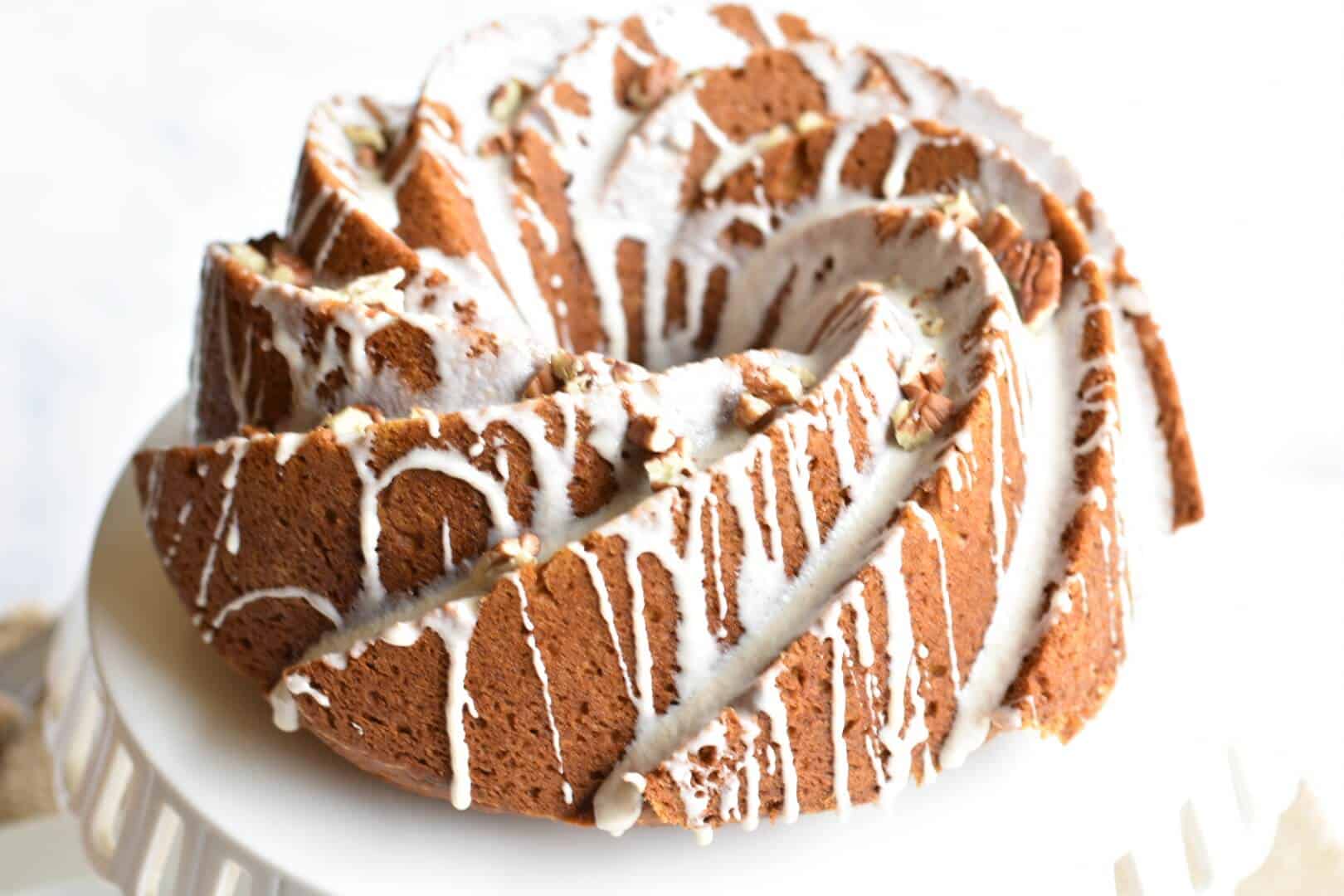
Too much baking soda or baking powder
Using too much of a leavening agent is one of the most common baking mistakes. The purpose of leavening agents is to give your batter a lift as the cake bakes. So, too much baking soda or powder will cause the cake to rise too much and then collapse upon cooling.
Solution: Always use measuring spoons when adding your leavening agents.
The rule of thumb in measuring dry ingredients is first to shake the container to loosen the particles, then lightly scoop and level it off with a flat object like a knife. Never pack the powder down. It's also wise to check the expiration date because baking soda can go bad.
Undermixing and overbeating the batter
This is usually where most beginner bakers fail. It can be a bit tricky to determine at what point you stop mixing the batter. Let's start with creaming the butter. This is an essential step in cake making, where you need to produce air bubbles that expand as they interact with the leavening agent.
Under-creaming means fewer bubbles, resulting in a flat, dense cake. While over creaming will create bigger bubbles that pop easily and weaken the cake's structure.
Next is mixing the wet and dry ingredients. An undermixed batter results in a low gluten formation, weakening the cake's foundation and causing it to collapse. On the other hand, too much beating gives cakes too much air bubbles, making them susceptible to popping and leaving large holes within the cake, causing it to sink.

Solution: Use softened but not melted butter to prevent over-mixing.
You will know the butter is creamed when it turns pale yellow and creamy with visible fluffy peaks. When mixing wet and dry ingredients, beat only until no visible dry spots are left. Remember that a few lumps are okay. The batter does not need to be completely smooth.
Oven temperature is inaccurate
After measuring your ingredients correctly and mixing the batter properly, you also have to ensure your oven temperature is spot-on for baking. Placing your cake batter in an oven that is too cool or not pre-heated as required will result in an underbaked cake with large air pockets. Putting it in a too-hot oven will bake the outside quickly, create a peaked center, and likely collapse once cooled.
Solution: Use an oven thermometer to keep tabs on possible fluctuations.
Also, avoid opening the oven door as much as possible because it will let the oven heat out.
Under baking the cake
You followed the required baking time on the recipe but still have an underbaked cake? This can happen because there are other variables at play that you need to consider here. The type of oven you are using and the size of the pan matter.
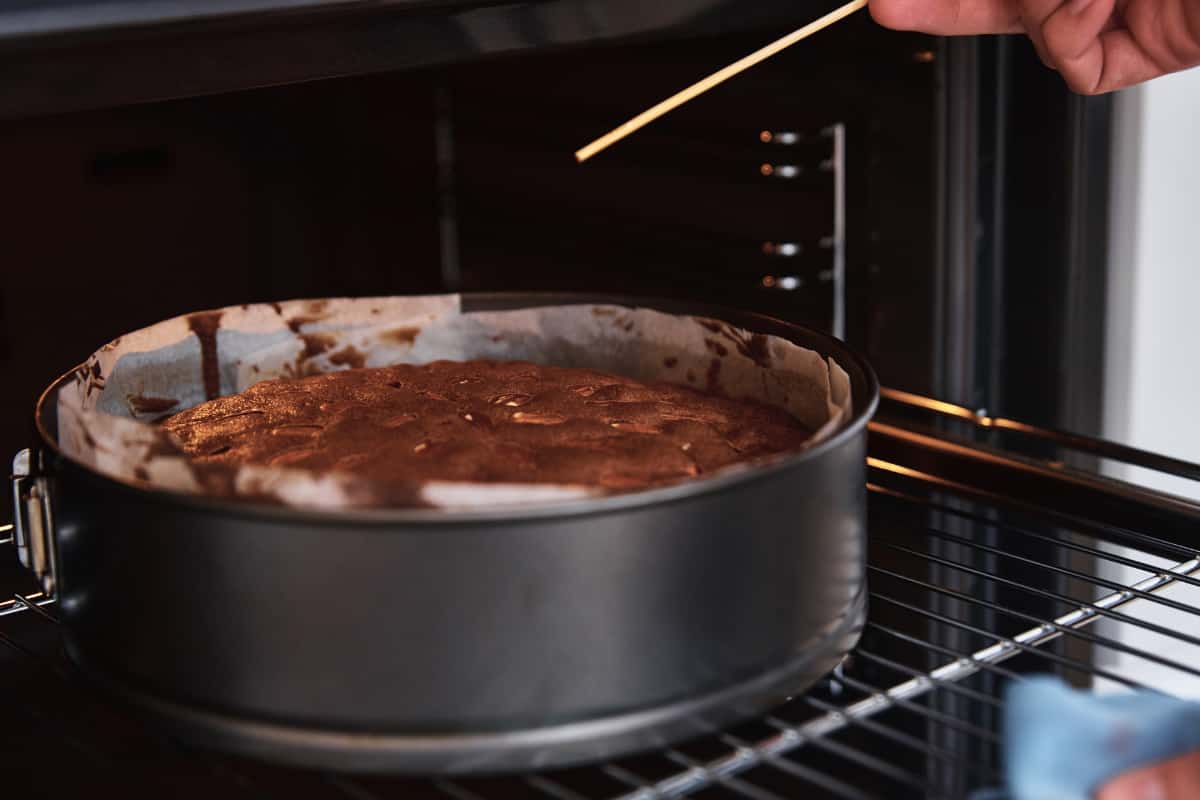
Solution: Always check for doneness using the toothpick or wooden skewer test.
Insert it at the center of the cake and pull it out. If it comes out clean, then the cake is baked through. However, if wet pieces of batter cling to it, you need to bake it a bit longer.
Signs of undercooked cake: The edges might have browned, but they do not separate from the pan easily. You can also tell if the cake is underbaked when the middle part looks tender and caved in. A perfectly baked cake should be springy, not spongy.
Using the wrong cake pan size
Lastly, always use the correct pan size depending on the batter you make. One classic fail is using a smaller pan, which makes the cake taller. It may look like the cake is done, but the insides will not be, causing the middle to hollow out.
Solution: Use the recommended pan size, or make adjustments if you have to.
Remember never to fill a cake pan to the brim because it will rise and overflow. Instead, fill it ⅔ of the way only.
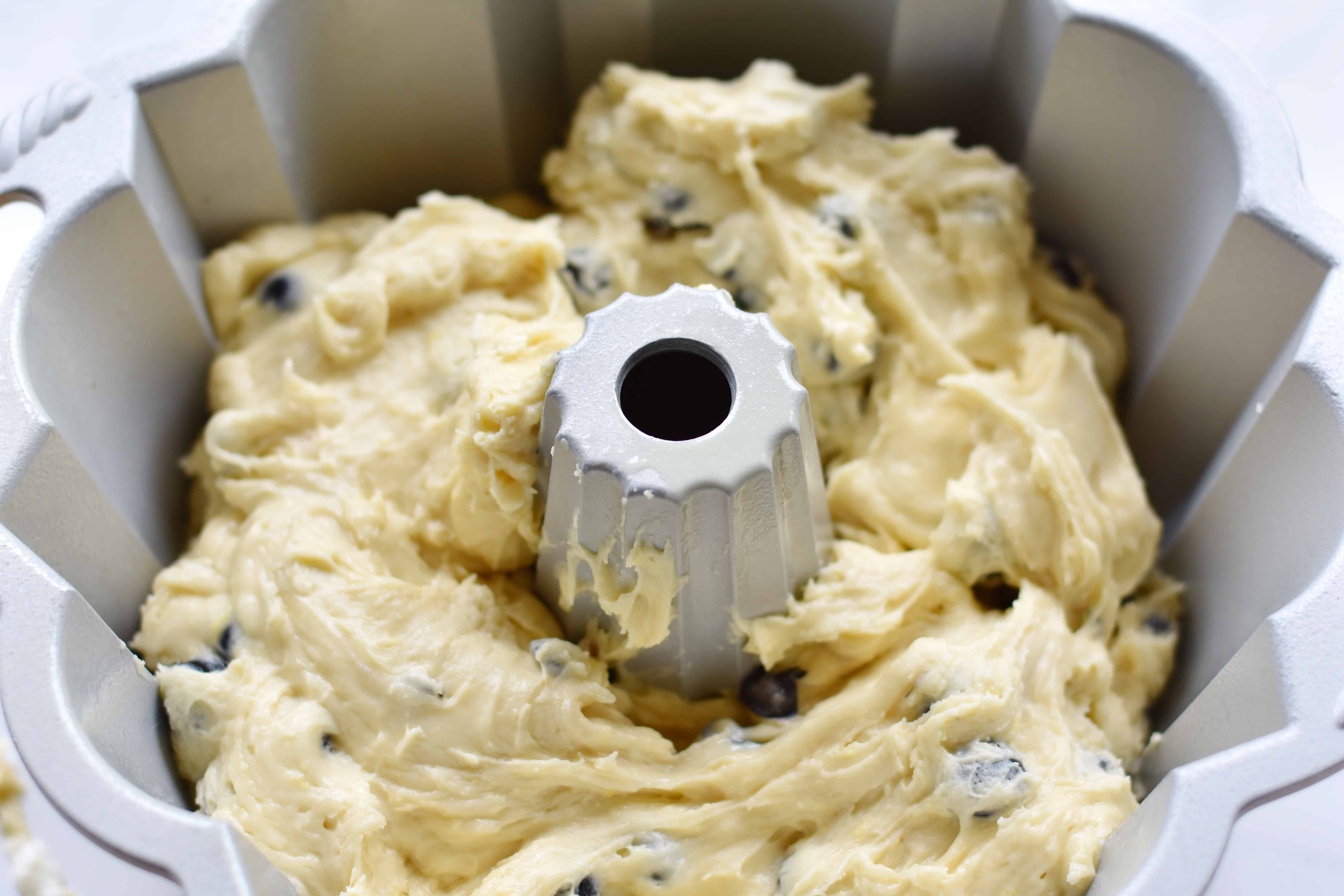
How to fix a sunken cake
While seeing your cake sink despite your best efforts is disheartening, do not lose hope just yet!
Here are some tips to help you quickly recover and still present a delicious homemade cake. This is where your creativity in frosting the cake will help.
- If the center is underbaked, quickly place it back into the oven and bake for a few more minutes!
- When the cake is slightly undercooked, and the sunken part in the middle is minor, you can level the cake and remove the unbaked portions.
- In worst-case scenarios, when the center has sunk, get a cake ring, place it in the middle, and cut out the sunken part. For a pleasant surprise, you can fill the middle with fresh fruits, frosting, or candies!
- You can also make mini cakes instead. Just cut off the good parts with a cake ring and frost away!
Favorite cake recipes
Check out some of these other great cake recipes if you're interested in a fool-proof recipe that will leave you with the perfect cake!
Final thoughts
Baking a perfect cake is a combination of art and science, but sometimes cakes may sink in the middle. This article has identified five common causes and their solutions to help you avoid this frustration.
To prevent sinking, make sure you use the correct amount of leavening agents and mix the batter properly. Check your oven temperature with a thermometer, and avoid opening the oven door too often. Test for doneness by using a toothpick or skewer, and always use the recommended pan size.
If your cake does sink, don't worry! You can still salvage it by baking it a bit longer, leveling and removing the undercooked parts, or getting creative with fillings. Keep these tips in mind for your next baking adventure and enjoy the process of creating delicious homemade cakes!


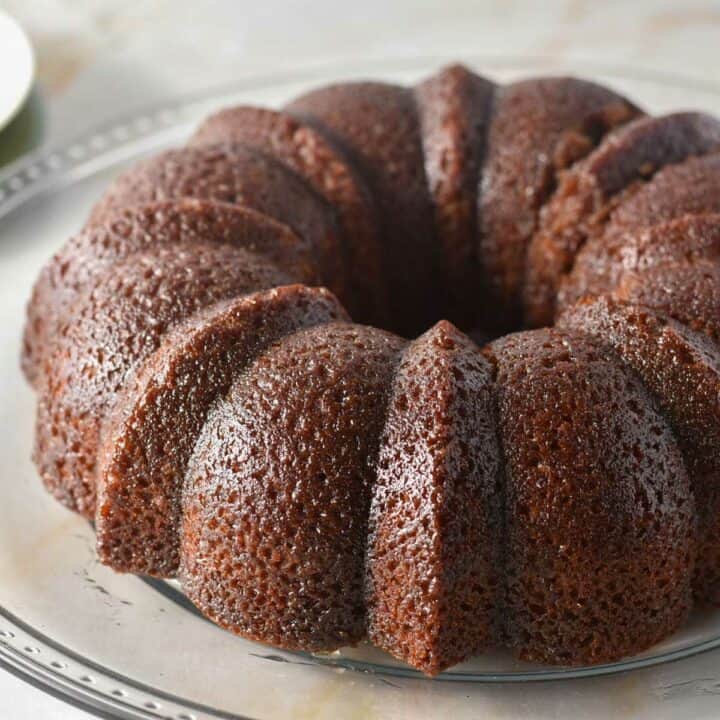
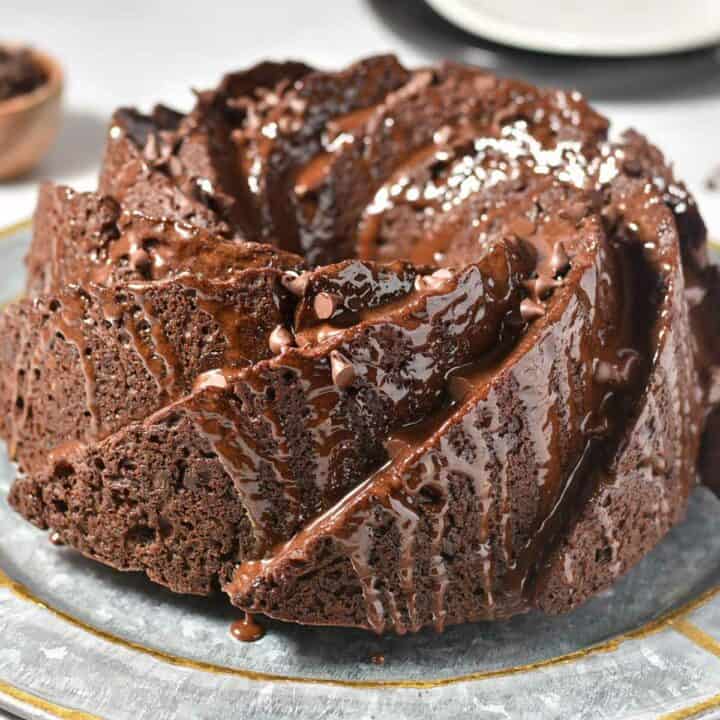
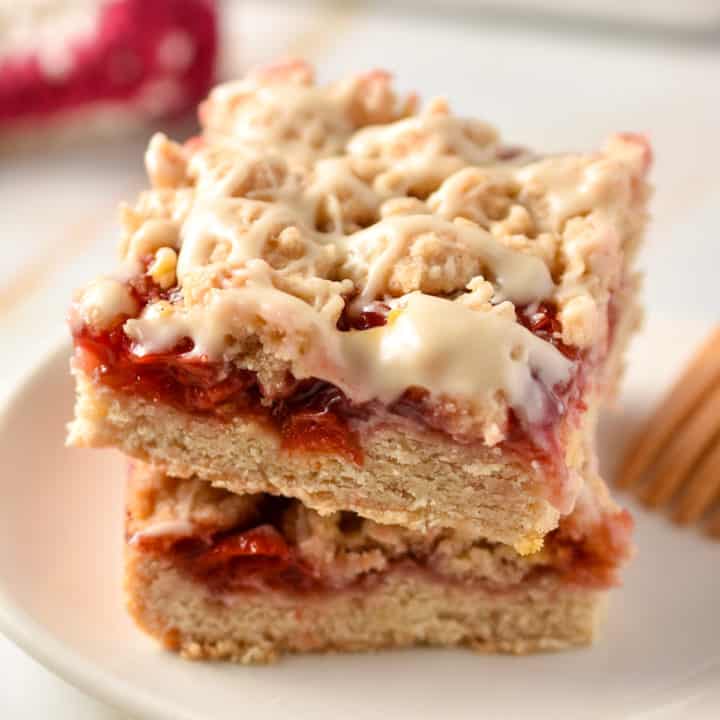


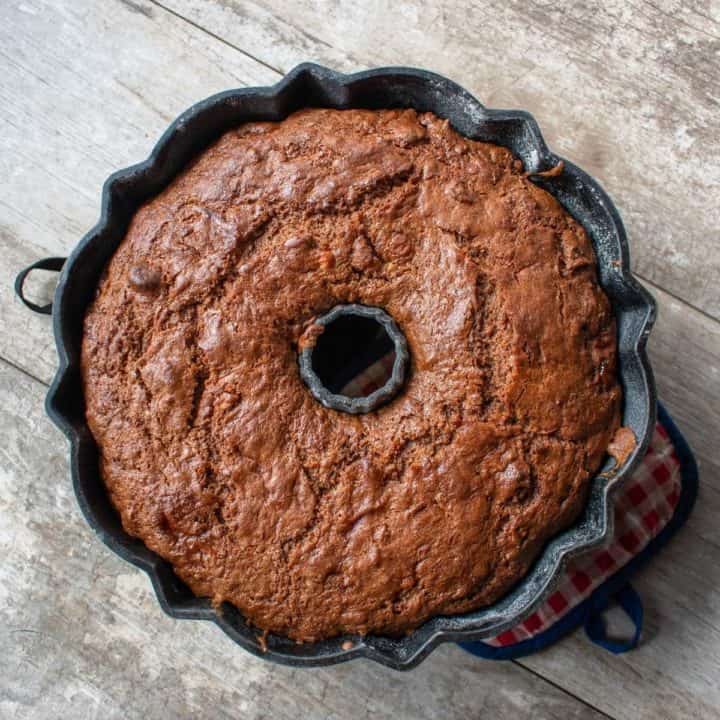

Comments
No Comments